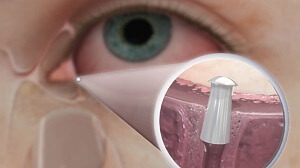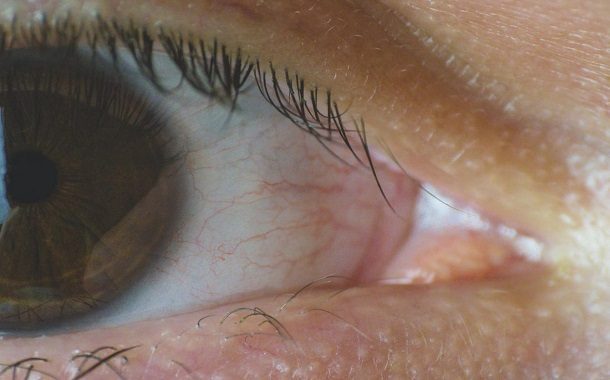Punctal Plugs Cost
Punctal plugs also called tear plugs, are small devices used to treat dry eye syndrome. Dry eye syndrome is also known as chronic dry eye.
Point occlusion (occlusion of the tear duct) is a procedure that eye doctors use for symptoms of dry eye syndrome. Point occlusion involves inserting punctal plugs (silicone or collagen) into the tear drain area of the eye to keep the tears in the eyes longer.
How Much Do Punctal Plugs Cost?
There are several factors that affect the cost of the punctal plugs such as the place where you are living, the doctor you choose, the type of the punctal plug, and whether or not you have insurance. In case you don’t have health insurance, you will have to pay anywhere between $370 and $680 for the punctal plugs.
According to a member of the Vision Surgery Rehab Network forum, the cost of the temporary collagen punctal plugs is $500, without including the cost of the permanent silicone plugs that have to be inserted in the future. You should budget another $500 for the second appointment, resulting in grand total of $1,000 without health insurance. If you have health insurance, you will have to pay only around $100.
You might also like our articles on the price of an eye examination at LensCrafters, Sam’s Club, or Visionworks.
Also, a member of the Health Boards forum said that he had to pay only $85 for the punctal plugs after his insurance paid, while another member was only responsible for his co-pay and was billed $650.
Most of the health insurance companies will cover the costs of this procedure as long as this is medically necessary. Though, in order to make a final decision, the insurance companies will require medical records and supporting documentation. For instance, the Medicare allowance is around $240 per eye or almost $550 for both eyes. If you have Medicare insurance, you will have to go through a trial with collagen in order to make sure that you will benefit from the plugging. To track the results, this trial is followed by an assessment. If the results are positive and the patient benefits from the collagen plugs, then permanent silicone plugs will be used.
Punctal plugs details
In severe dry eye syndrome, the number of tears produced is less than normal. The temporary or reversible occlusion of the tear points with plugs has the role of keeping the natural tears on the ocular surface for a longer time and prolonging the effect of the artificial tears administered.
Punctal plugs work in the same way as a drain plug in a bathtub. They are small plugs that sit in the ducts of the tears in the eyes.
They work by blocking the drainage duct that runs the fluid on the surface of the eye. Instead of escaping, the fluid will remain on the eye’s surface, which maintains lubrication throughout the day.
These plugs work with both natural and artificial tears and can reduce the need for eye drops.
Doctors will perform a physical examination of the eye before inserting the punctal plugs. They will ask about a person’s symptoms and any relevant medical history they may have.
After diagnosing dry eye, your doctor will usually prescribe artificial tears or other treatments to see how your eyes react. If they are not effective after a certain period of time, your doctor may consider using punctal plugs
The process is quite simple and many doctors insert the plugs into their office. He or she will first anesthetize the tear duct to prevent irritation. They will then insert the plug directly into the rupture channel using tiny forceps. If the tear duct is too narrow, it may be necessary to use a tool called a tear dilator to open it so that the plug can be attached.
The whole process usually takes a few minutes. Some people may experience slight discomfort during the introduction, but the plugs are not usually painful. Once the process is over, most people can’t feel it.
Types of plugs used in severe dry eye
- Silicone plugs can be found in a preloaded device and can be mounted at the lower and/or upper tear points.
- SmartPlugs are made of a biocompatible material that, when introduced at the tear point, at body temperature, and in a saline environment, decreases in size to 1 mm in diameter and 1.5 mm in thickness.
- Resorbable plugs made of collagen or biodegradable polymers achieve temporary occlusion of the tear spots.
Perforated silicone plugs can be used in patients with epiphora secondary to partial or total stenosis of the lacrimal points. They are preloaded to facilitate their introduction to the tear point. They remain in position for a few weeks, during which time the tear point is remodeled.
What are the extra costs?
 The majority of the doctors will want to test the eye with temporary plugs before using them as a permanent solution. Sometimes this can double the costs we presented above, depending on the billing situation. Make sure you talk with your doctor’s office beforehand to see what you have to pay for exactly.
The majority of the doctors will want to test the eye with temporary plugs before using them as a permanent solution. Sometimes this can double the costs we presented above, depending on the billing situation. Make sure you talk with your doctor’s office beforehand to see what you have to pay for exactly.
Even though it is considered to be a “permanent” solution, patients often find their punctal plugs falling out. To reattach them you may have to pay extra fees for the doctor’s visit, depending on the situation.
Your plugs may cause a reaction or/and discomfort over time. In situations like this, the doctor will simply flush out the plugs and remove them. For this intervention, they may charge a doctor’s office visit fee.
Important things to consider
A doctor may recommend punctal plugs for people with a condition called dry eye, which may cause the following symptoms:
- itching and dry eyes constantly
- burned eyes
- blurry vision
- eyes twinkling rapidly
A common side effect is an itchy, slightly irritating sensation in the eyes. Most people get used to this feeling or find that it disappears after a while.


Leave a Reply
Want to join the discussion?Feel free to contribute!